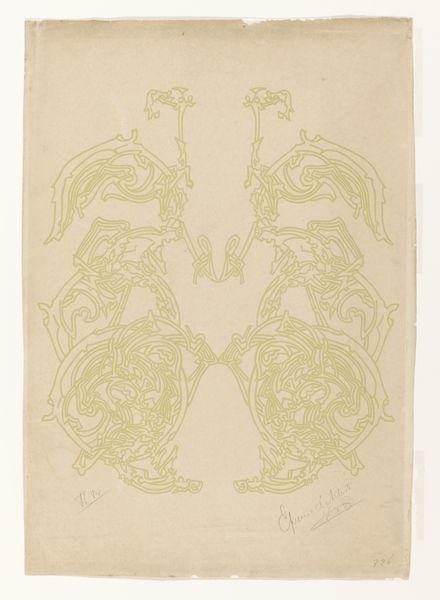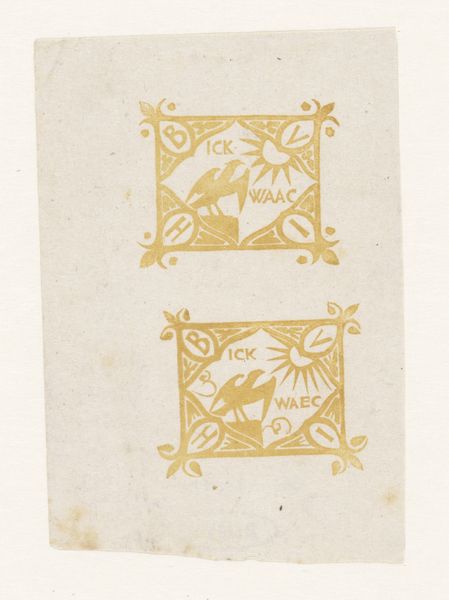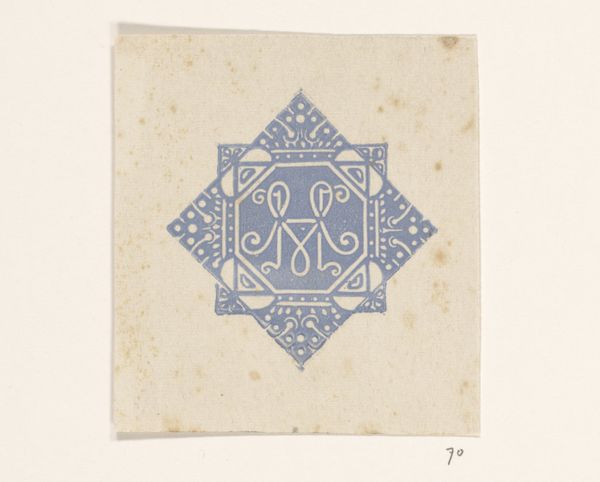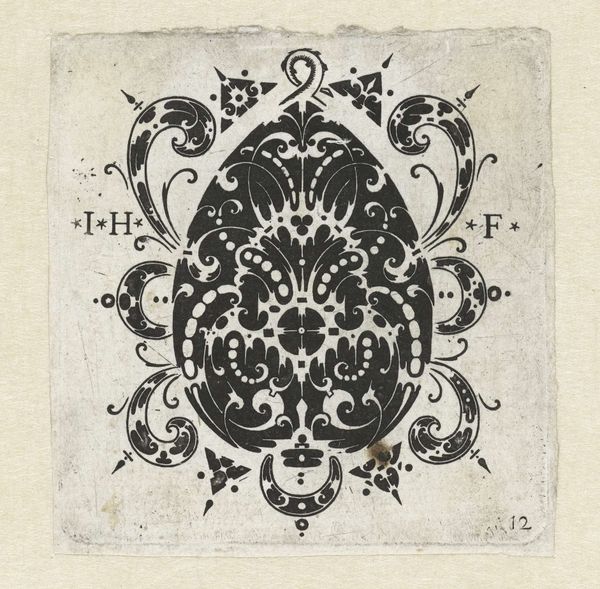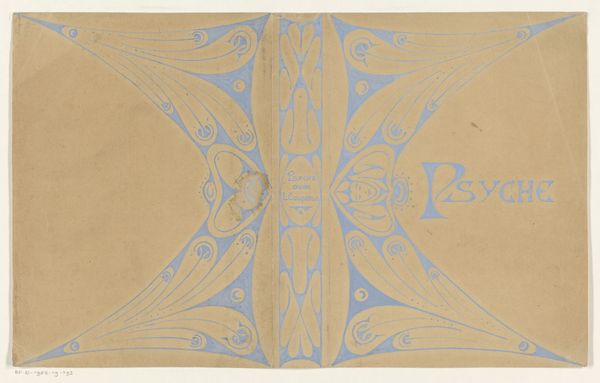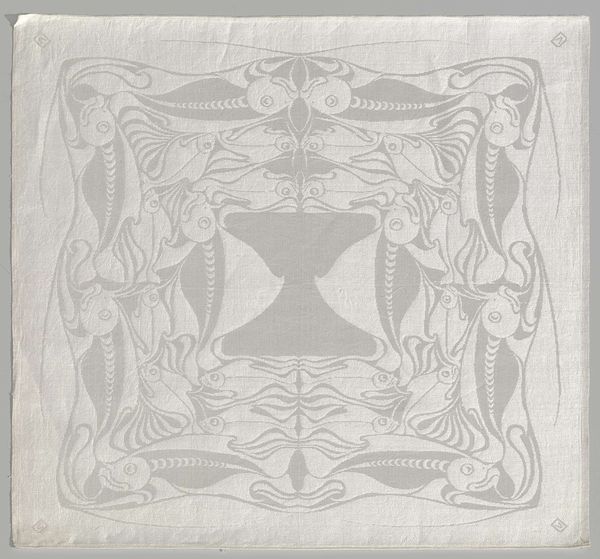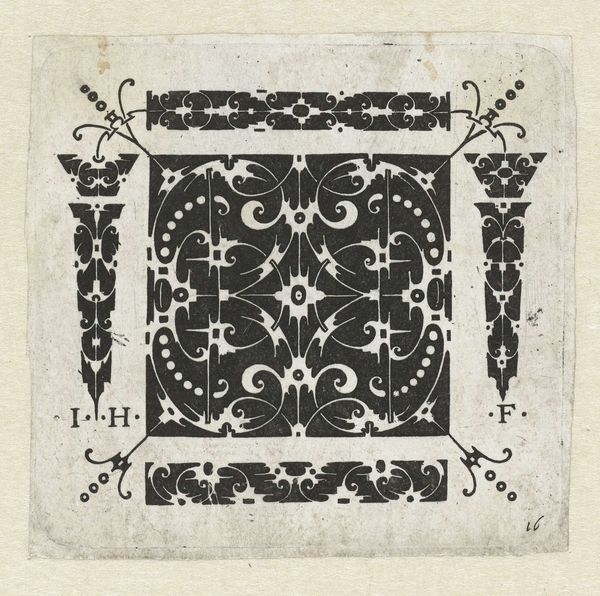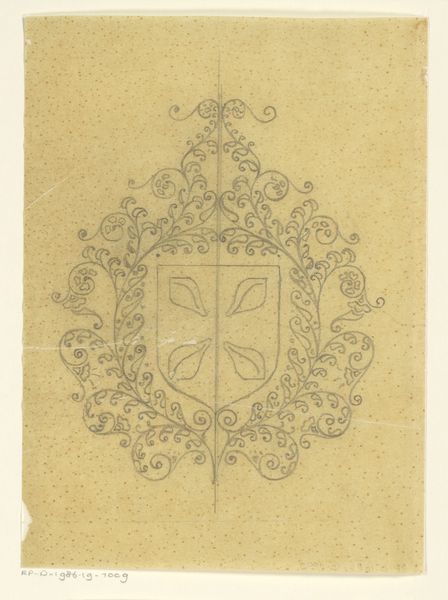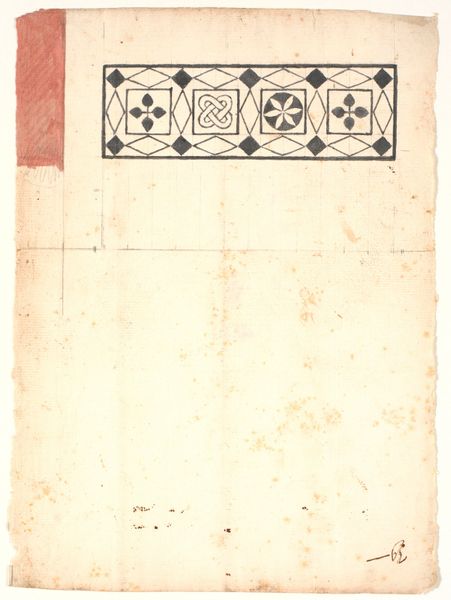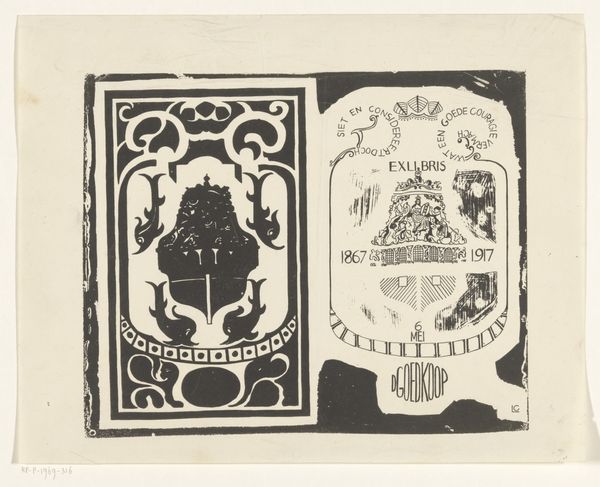
drawing, graphic-art, paper, typography, ink
drawing
graphic-art
art-nouveau
paper
typography
ink
symbolism
Dimensions: height 81 mm, width 98 mm
Copyright: Rijks Museum: Open Domain
Curator: This is "Vignet met letters B, K, W en G," or "Vignette with letters B, K, W and G," an ink drawing by Bernard Willem Wierink dating from around 1871 to 1939. It is executed in green ink on paper. Editor: It's strikingly geometric, almost a grid of interlocking shapes with that soft, muted green giving it an oddly serene quality. What immediately springs to mind is how this functions as an aesthetic predecessor to aspects of digital design, how each part creates the whole image. Curator: Wierink was associated with the Art Nouveau movement, and while it features floral motifs characteristic of that style, this work emphasizes geometric and symmetrical patterns, integrating typography and symbolist imagery in a tight format. Consider how the clean presentation would influence societal views and perceptions of communication. Editor: Yes, looking closer, there's a sense of coded language. Each quadrant features a prominent letter – B, G, K, W – and symbols which seem to work together within a contained unit. It reminds me of discussions around semiotics – the construction of meaning – particularly in visual culture and questions around the cultural politics involved in deciphering encoded symbols. What social function did it have at that time, how does typography translate to the art form? Curator: That's an important question to pose; you see here how Wierink pulls from design conventions to highlight certain trends through societal commentary, in graphic representation within Art Nouveau’s broader efforts to elevate craft and design to the level of fine art. Its historical function was closely tied to design and the growth of visual culture within a specific social, political and cultural context. The artist aimed for imagery intended for the rise of mass culture and its effect on society. Editor: The careful composition strikes me, but I wonder about the work beyond its historical significance in book design, as that helps inform broader discourses about symbolism in visual communications in culture at large. To your point, this image becomes not only historically valuable, but opens discussions related to modern aesthetics. Curator: Indeed. Wierink's vignette shows us how much the historical can inform the contemporary. Editor: I completely agree, prompting questions around society's values as a whole.
Comments
No comments
Be the first to comment and join the conversation on the ultimate creative platform.

